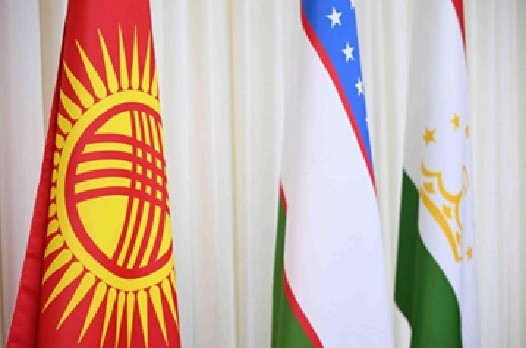Khujand Summit: How is Central Asia Changing?

On the same day, the Khujand Declaration “On Eternal Friendship” was also adopted, and the symbolic Friendship Stele was erected. The countries exchanged ratification documents. These good news coincided with the spirit of the blessed Navruz. Navruz is a symbol of renewal, equinox, and hope. The political spring in Khujand also fit into the same context.
Here, spring is not a metaphor, but a real political, diplomatic and human reality. At a time of global instability and geopolitical fragmentation, Central Asia has shown how fragile trust can be built into a peace edifice.
From border to priority: regulated complexity
As is well known, the border issue between Kyrgyzstan and Tajikistan was a very sensitive point. Enclaves, disputed territories, ethnic intersections, restrictions on the use of water and roads - all this turned the border into a minefield that prevented a lasting peace.
The Batken armed conflict in September 2022, a battle involving artillery, drones and armored vehicles, revealed how fragile the situation in the region was. Dozens of people were killed, hundreds were injured, and thousands of residents were evacuated. Those events showed that the problem was not just a diplomatic one, but a direct threat to security.
After that, the heads of the special services of the two countries - Kamchibek Tashiyev and Saymumin Yatimov - began to conduct phased negotiations in a closed format.
Over the course of three years, satellite maps were agreed upon, the official status of the enclave - Vorukh - was legally strengthened, a mechanism for exchanging territories was developed, and a neutral transport corridor was opened. This agreement is not just a binding agreement, but an expression of a conscious, mature civic position. Behind the process lies the hope of saving people's lives, restoring trust, and creating a stable future.
Tashkent - a leader as a facilitator
Without a center of stability in the region, architecture cannot be built. In recent years, Tashkent has emerged as such a center. Consequently, it has demonstrated the nature of a force that opens the way, harmonizing relations, and not a dominant tool.
The wave that rose in Uzbekistan's foreign policy after 2016 has taken on a tectonic character. President Shavkat Mirziyoyev proposed a comprehensive language of trust in the region: openness rather than closure, pragmatism rather than competition, bridges rather than walls...
Uzbekistan has demonstrated its approach in practice with the following steps:
It has created a platform for regional dialogue through the "S5+1" format;
It has supported the initial stages of the China-Kyrgyzstan-Uzbekistan railway;
More than 15 new border crossings have been opened in 7 years;
Trade turnover with Tajikistan has increased from $120 million to $800 million;
Cooperation in the educational and cultural-humanitarian spheres has been strengthened, and joint universities have been opened.
Our republic has become a quiet and at the same time effective leader, not only taking the initiative, but also guaranteeing the theory. This is one of the most important turning points in regional policy.
From idea to institutions: steps towards Schengen
The Khujand Agreement is, so to speak, the institutional foundation of regional unity. The summit officially mentioned the idea of a “Central Asian Schengen” for the first time. This is a project to create a visa-free zone, harmonize customs and migration policies.
What was once considered a mirage is now becoming a logical stage of integration. Joint fairs are being held in the region: Khujand, Andijan, Osh, and road and rail routes have been launched: Dushanbe - Fergana, Osh - Tashkent. More than 20 new flights were opened in 2024 alone. The scale of student exchanges is rapidly expanding.
This process reflects the goal of creating a space of voluntary and free cooperation, not an empire or a confederation, but one based on mutual respect.
Not an enclave – a civilizational connecting belt
Central Asia is not a remote point or buffer on planet Earth. On the contrary – a crossroads. A link connecting Shanghai and Istanbul, Brussels and Islamabad. This reality is beginning to be clearly seen in the macro-regional logic that is being established.
The China-Kyrgyzstan-Uzbekistan railway, which will be put into operation in 2026, the Trans-Afghanistan route, which will deliver electricity from Tajikistan and Kyrgyzstan to South Asia through CASA-1000, which is expected to change the logistics of the region, despite certain risks.





